15 Unknown facts about Mount Kailash
Mount Kailash is a mystery that everyone wonders about. We will tell you some interesting, known, and unknown facts about Mount Kailash that you should know before going on Kailash Mansarovar Yatra.
Mount Kailash or Kailash Mansarovar is the first in the Panch Kailash series sacred to four religions. In India Mount Kailash is known as Kailash Mansarovar and is also known as Gangs Rinpoche in Tibet, the word Gang means “Snow peak” and Rin Po Che means “Precious one” so gang rinpoche means “Precious Jewel of Snow.”
1. Kailash is still unclimbed
Mount Kailash is a 6638-meter-high mountain in the upper Himalayan region that is still undefeated. Many mountaineers have tried to climb Mount Kailash some of them even climbed the tallest mountain in the world Mount Everest but couldn’t climb Mount Kailash.
Reinhold Messner of Italy is considered one of the most renowned mountaineers in history who has successfully climbed Mount Everest the tallest Mountain in the world. Reinhold Messner was the person to climb Mount Everest solo, and the first to climb without supplemental oxygen. Reinhold Messner was the mountaineer until 1980 who was given official permission to climb Mount Kailash but he refused to climb Mount Kailash out of respect.
Reinhold Messner said, “IF WE CONQUER THIS MOUNTAIN, THEN WE CONQUER SOMETHING IN PEOPLE’s SOULS.”
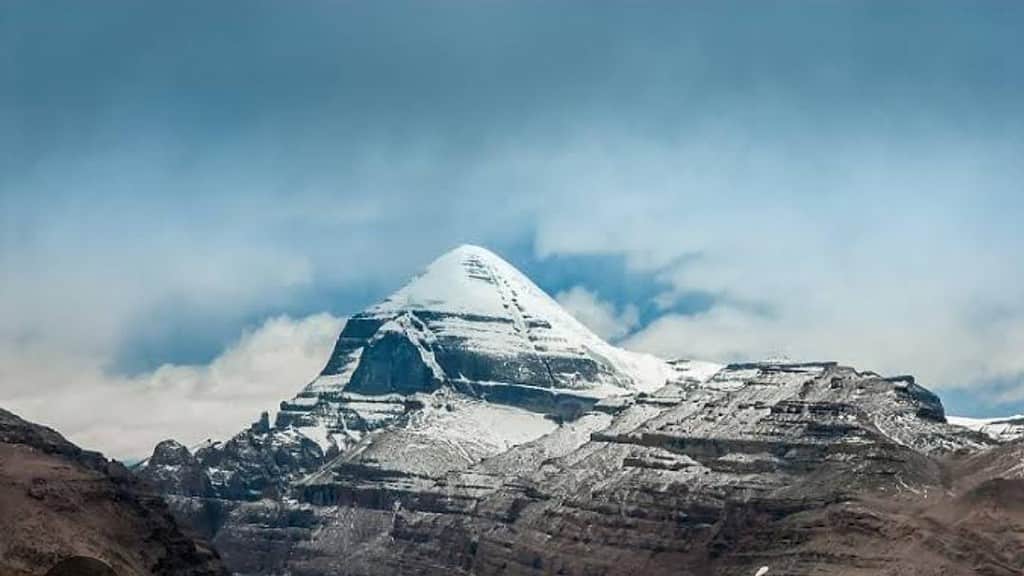
2. Kailash is sacred to four religions
Kailash is a sacred Mountain or the most sacred mountain in the whole world. Mount Kailash does not only hold spiritual significance in Hindu Dharma but in other religions also like Jainism, Buddhism, and Bonism.
Mount Kailash is sacred to four religions as
- Hindus – Hindus worship Mount Kailash as the home of the supreme God Lord Shiva also known as Adi Yogi (First Yogi) and Mata Parvati. Mount Kailash also known as Kailash Mansarovar in Hindu Dharma is a gateway to Swarg Lok (Heaven).
- Jainism – Jain believes that the first Tirthankar(Supreme Leader), Rishbhdeva attained Moksha (Liberation) here.
- Buddhist – Mount Kailash known as Mount Meru in Buddhism is the center of the Supernatural powers, the center of the spiritual universe, and the center of the Cosmology.
- Bonism – It is believed that Mount Kailash is the abode of the Goddess Sipaimen and Bonism originated from the kingdom around Mount Kailash.
3. Kailash is the center of the earth
Mount Kailash is considered the center of the earth for so many reasons like the immense sacred value of Mount Kailash for many religions, the tales of the Shambhala the hidden city beneath Mount Kailash, its unique geography, temples, its unexplained magnetic field, the mysterious pyramid shape of the mountain, and many more things.
4. Unique Geographic location
Mount Kailash is believed to be the center of the earth because of its distances from the North and South poles.
Mount Kailash is 6666 km away from the Northern Hemisphere Pole.
Mount Kailash is 13332 km away from the Southern Hemisphere Pole which is exactly twice the distance from the North Pole.
Mount Kailash is the starting point of many big and small rivers that play a significant role in Indian and Chinese civilization as well. Rivers like the Indus, Sutlej, Karnali, and Brahmaputra start from the Mount Kailash range.
Mount Kailash is surrounded by 6 other mountain ranges despite being a cold desert land the whole area is full of plants and grasses filled with medicinal properties.
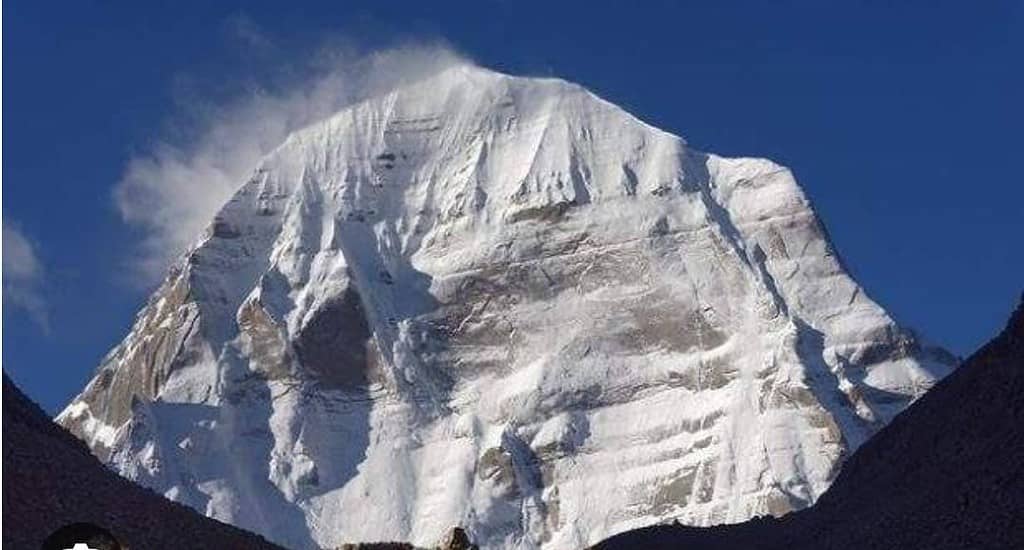
5. Time moves faster in Mount Kailash
There is a belief in the valley that time moves or runs faster on Mount Kailash and around the Mountain Valley. But people say that as you get closer to Mount Kailash the time runs even faster and gets to normal when getting away.
Although there is no machine or way to measure that if time is moving slower or faster but almost all people like pilgrims, tourists, climbers, mountaineers, and even some scientists also who have done the Kailash Mansarovar Yatra or visited Mount Kailash for any purpose have reported that their hair and nails have grown faster than normal almost the equivalent of one month in five to seven days.
6. The magnetic field of Mount Kailash
Mount Kailash or Kailash Parvat has some kind of magnetic field that disturbs the compass, radios, and other magnet and frequency-based types of equipment.
If you bring a compass near the mountain the needle of the compass begins fluctuating and does not indicate true North. The magnetic disturbance in the pieces of equipment is the main reason that the helicopters and drones are not operational here and kind of are prohibited to prevent any accidents and mishappening.
7. Kailash is Occupied by China
First story
Yes, Mount Kailash is occupied by China but, not from India but “Tibet”, I’ll explain this.
In ancient times the whole Himalayan region was called Kailash which was dedicated to lord Shiva but with time and so many partitions the mountain is now in Tibet.
Second story
According to the current world territorial world map, Mount Kailash is in Tibet which controversially or maybe officially (I don’t know much about this) is occupied by China. So that means Occupied or not (it is not up to us to decide or declare) but Mount Kailash is in China.
Third story
Mount Kailash was part of Nepal and a Nepali King named Amshu Verma gifted the area of Mount Kailash as a dowry in his daughter Bhrikuti Devi’s marriage to the Tibetan King named Songtsan Gampo.
Fourth story
Nepal lost the Mount Kailash area to China in 1972 during the Sino-Nepalese war and since then China has the control of the Mount Kailash area.
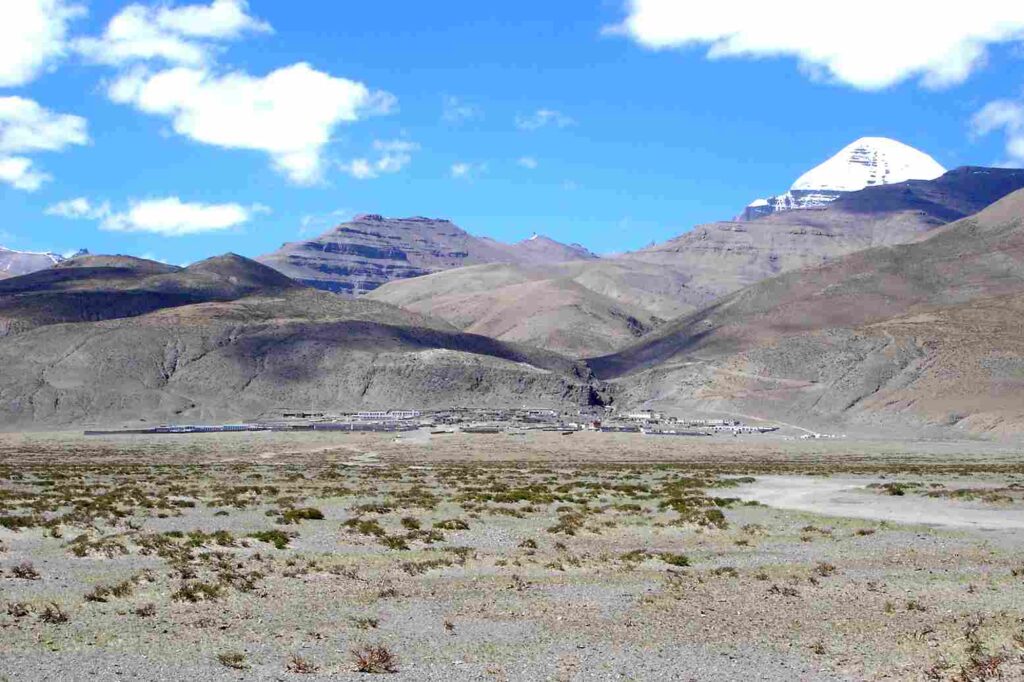
8. Kailash is visible from India
Yes, Mount Kailash is visible from India, visitors can see the mountain area from the old Lipu Lekh Pass in Uttarakhand.
- Story
Recently some local people of Vyas Valley along with some trekkers and tourists in Uttarakhand claimed to see Mount Kailash or Bada Kailash from “LIPU LEKH” a mountain pass in Uttarakhand’s Vyas Valley near Nabhi Dhang After their claim went viral in the area and on social media it was later confirmed affirmatively by the Indian army and other officials.
- Accessibility
To see Mount Kailash pilgrims reach Nabhi Dhang first which is a viewpoint for Om Parvat in Adi Kailash and Om Parvat Yatra and trek for 1 km to get to Lipu Lekh pass at an altitude of nearly 18000 feet, then this spot provides the breathtaking majestic view of Mount Kailash.
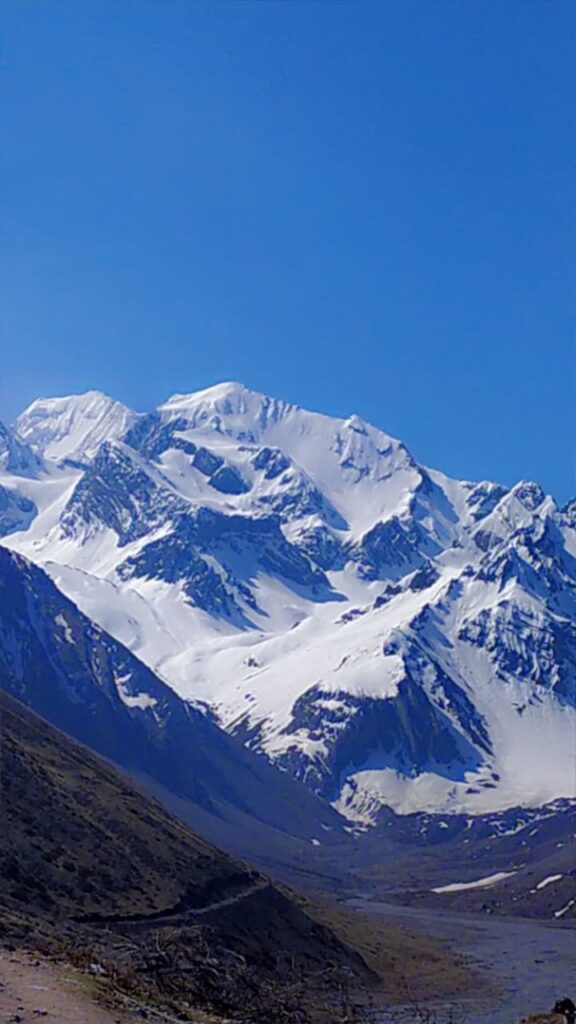
9. Legend of Buddhist Monk who climbed Kailash
There is a local story or a legend of a Buddhist monk named “JETSUN MILAREPA” who was a Buddhist disciple, who once climbed Mount Kailash also known as Mount Meru in the Buddhist community successfully in the 11th century.
Milarepa was believed to be a singer, a poet, a teacher, and a Monk in the Buddhist community and he was a great devotee and spiritual person.
After climbing Mount Kailash JETSUN MILAREPA believed in finding the secrets that the world should not know, he said we must not disturb the one who is resting here and asked everyone not to climb the mountain ever. From that day forth climbing Mount Kailash in Buddhist Community is prohibited.
10. Two types of Kailash Parikrama/Kora
Kailash Parikrama or Kailash Kora in Kailash Mansarovar Yatra is a 3-day and 52 km long comparatively hard high-altitude holiest walk around Mount Kailash that is believed to be equivalent to taking a round of lord Shiva and Goddess Parvati. Pilgrims with heart conditions or any other physical abnormality conditions are suggested not to do this trek. The Kailash Parikrama starts from Darchen(4575 meters) goes to Dirapuk(4900), Dolma La pass(5630 meters), Zutulpuk, and gets back to Darchen in three days. There is an alternate route via Kuber Kund that avoids Dolma La pass. Some people who have some experience in trekking do this Kora in two days and local Tibetan people do this Kora in a single day.
There are two types of Parikrama or Kora the first is Outer Parikrama or Outer Kora, and the second is inner Parikrama/Kora.
What is Kailash outer parikrama
Kailash Parikrama is a trek around Mount Kailash that starts from Yama Dwar and ends at Darchen. Kailash outer Parikrama is a 52 km of trekking that takes around three days, sometime pilgrims take a day halt at Dirapuk(4900 meters) to do the Kailash Charan Sparsh trek which is a day trek to the feet of the holy Mount Kailash.
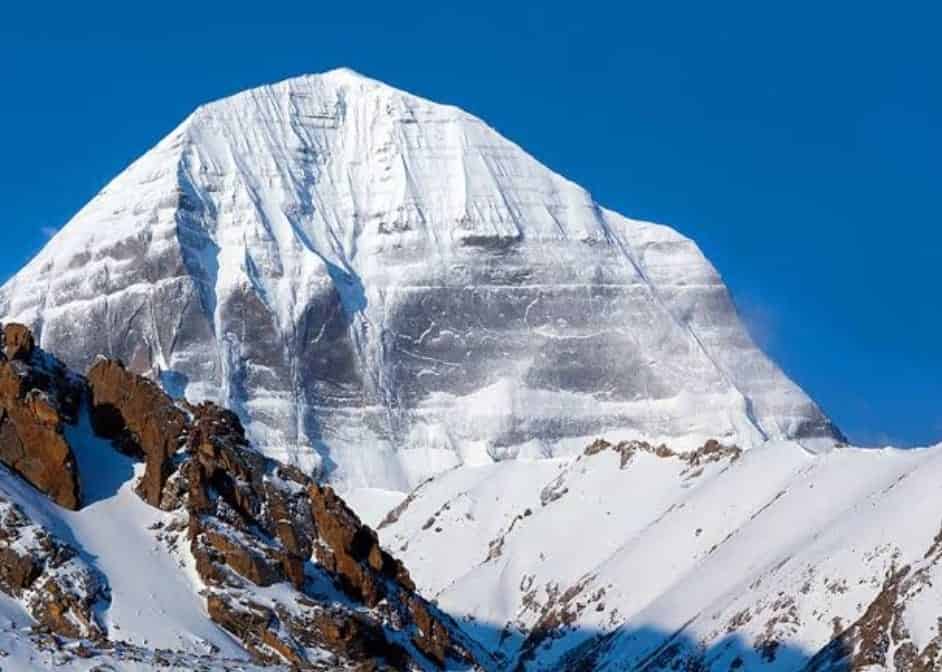
What is Kailash inner parikrama
As we know there are two types of Kailash Parikrama the first is outer and the second is inner Parikrama. Pilgrims who are not willing or cannot do the whole 52 km trek, or who are prone to AMS and cannot tolerate the high altitude, can opt for this inner Parikrama which is a single-day trek.
Kailash Inner Kora starts from Dirapuk(4900 meters) and goes to Mount Kailash where pilgrims touch the feet of Mount Kailash and come back to Dirapuk and come back to Darchen.
The pilgrims who cannot do this Kora or Parikrama trek or don’t want to do the whole Kailash Parikrama can go to “ASHTAPADA” to touch the feet of Mount Kailash which is considered as valuable as touching the feet of Lord Shiva.
“ASHTAPADA” is only 3 km from Dirapuk where the two paths divide one for ASHTAPADA and another for YAMA DWAR. Although this 3 km is not easy, it is a very steep slope trek and may take up to 2 to 2:30 hours from one side, but it is doable under the guidance of a local Tibetan guide, Yes you would have to hire a local guide to visit ASHTAPADA from Dirapuk it is a rule of Tibetan Authorities.
11. Kailash Parikrama difference between Hinduism and Buddism
Hindus do this Parikrama clockwise and Buddhists do this Parikrama anti-clockwise.
Kailash Parikrama is a ritual in Hindu Dharma, Buddhism, Jainism, and Bonism. Kailash Parikrama/Kora is a circumambulation trek that goes around Mount Kailash through Dirapuk, the glaciers of Dolma-la Pass, Gaurikund, the big grassland of Juthulpuk field with Yaks, sheep, and mountain goats.
Every pilgrim starts the Kailash Parikrama/Kora at Yama Dwar and ends at Yama Dwar but does the circumambulation in a different direction.
In Hindu Dharma Mount Kailash well known as Kailash Mansarovar is the abode of Lord Shiva and Goddess Parvati, Mount Kailash is the gateway to Heaven in Hindu Mythology, and doing the Kailash Parikrama clockwise will free the pilgrims from the endless cycle of rebirth and death.
In Buddhism, the Kailash Parikrama is believed to be the representation of life and rebirth of new life as the Parikrama is completed.
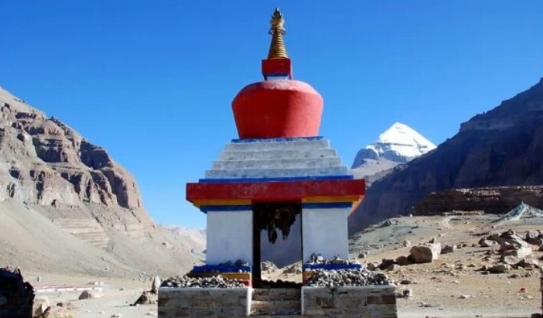
12. Nandi Parikrama
Kailash’s inner Parikrama/Kora is called “NANDI” Parikrama. Nandi is a Bull who is believed to be the VAAHAN of lord Shiva, a true devotee and companion of lord Shiva.
Kailash’s outer Parikrama or Kora offers views of Mount Kailash from every direction while doing the 52 km long trek over three days around Mount Kailash but Kailash inner Parikrama or inner Kora offers the opportunity to touch the feet of Mount Kailash which is considered to be the equivalent to touch the lord Shiva’s feet that denotes the importance of Nandi and Nandi Parikrama.
13. Golden Kailash
In Dirakpu during Kailash Parikrama Mount Kailash glows in golden color at sunrise and sunset because the mountain which is covered in snow generally, snow and ice presents us with a uniformly white appearance. This is because visible light is white. Mostly all the visible light that strikes on the snow or ice surface is reflected back without any particular preference for a single color. Most natural materials absorb some sunlight, which gives them their color. Snow, however, reflects most of the sunlight, creating a white appearance. And as you know white color is more reflective than others.
Mount Kailash looks Golden at Sunrise and Sunset because of the red rays of the sun mixed with white snow-covered peaks that create the phenomenon that is called Golden Kailash. The reason behind this Golden Kailash phenomenon is science.
14. Still water of Lake Mansarovar
Lake Mansarovar also known as Mapang Yongcuo in Tibet is a natural freshwater glacial lake alongside Mount Kailash. Lake Mansarovar is one of the Highest freshwater lakes in the world at a staggering height of 14948 feet above sea level.
Lake Mansarovar also known as Mansarovar taal is believed to be made by Devtas(Lords of Heaven). Mansarovar is a freshwater lake at a height of almost 15000 feet above sea level, the water in Mansarovar Lake remains calm in any given weather condition.
For a long time, pilgrims who visit Mount Kailash have the tradition of bathing in Lake Mansarovar before going to Mount Kailash to get the blessings of Lord Shiva, but the Chinese government has prohibited dip bathing in Kailash Mansarovar to keep the Lake clean but you can take out a bucket of water and bath in Lake Mansarovar water.
Another remarkable facet of the mountain is the presence of two lakes: Mansarovar and Rakshas Tal. Despite being just two miles apart, these lakes showcase completely different characteristics. Mansarovar is a freshwater lake with warm water, while Rakshastal is a saltwater lake with frigid water. Some liken these lakes to representations of the Sun and the Moon on Earth. Furthermore, although speculative, there is a belief that Lake Mansarovar may be visited by extraterrestrial beings.
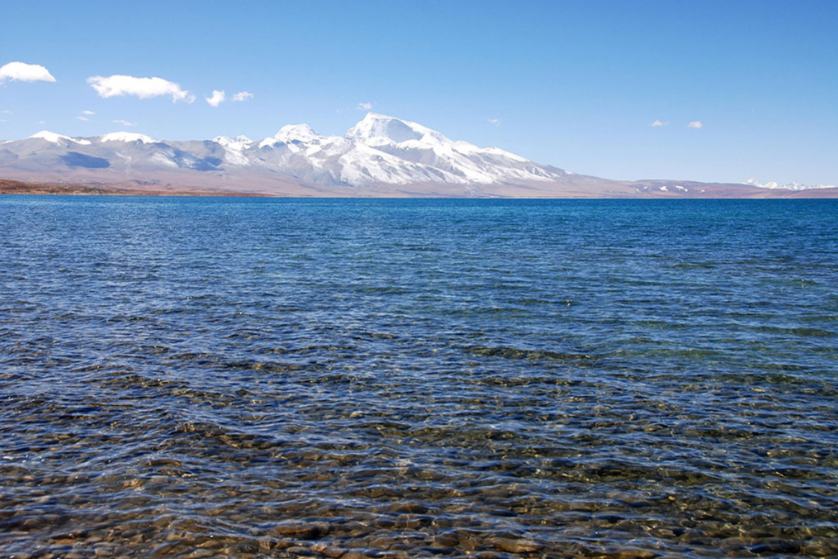
15. Rakshas Taal water
Rakshas Taal also known as La’angcuo in Tibet is a natural salt-water glacial lake like Lake Mansarovar situated in the west of Lake Mansarovar and south of Mount Kailash. Rakshas Taal is one of the
Rakshas is a “Sanskrit” word which means “Demon” and Taal means pond so Rakshas Taal means pond created by demons. Rakshas Taal is believed to be made by Ravan himself(Yes the same Ravan, ruler of Lanka who was killed By Lord Ram). Ravan was a great devotee of lord Shiva and used to visit Kailash Mansarovar regularly. When he found that Devtas had made a lake beside Mount Kailash then he also made a saltwater lake west of Lake Mansarovar at the height of 15010 feet above sea level to please Lord Shiva and to show his superiority and establish his dominance over the Devtas.
There is a major difference between Lake Mansarovar or Mansarovar Taal and Rakshas Taal that both lakes are natural and very close to each other but one is fresh water and another is saltwater. The water in Lake Mansarovar remains still and quiet even in the blizzards and thunderstorms whereas the water of Rakshas Taal always has big waves and storm-like conditions. Although both Lakes are situated very close to each other but have quite opposite behaviour.
In Buddhism Lake Mansarovar which is round is the representative of the sun and Rakshas Taal which is shaped as a crescent is the representative of the Moon.
There is a small river named Ganga chhu that connects Rakshas Taal and Lake Mansarovar.
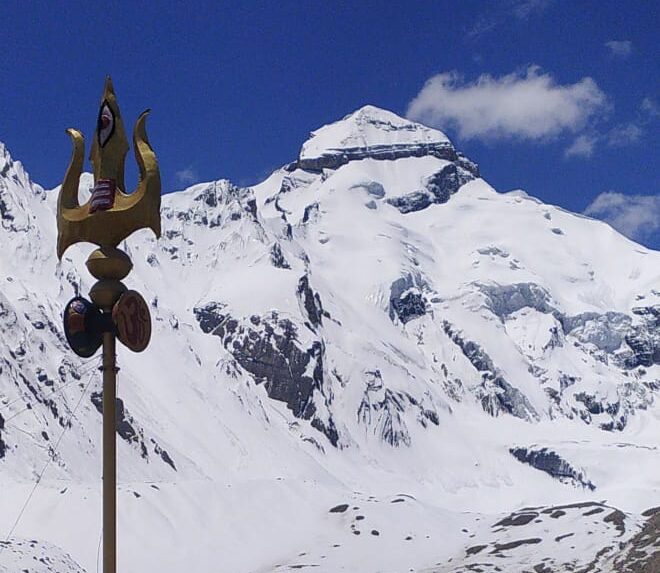
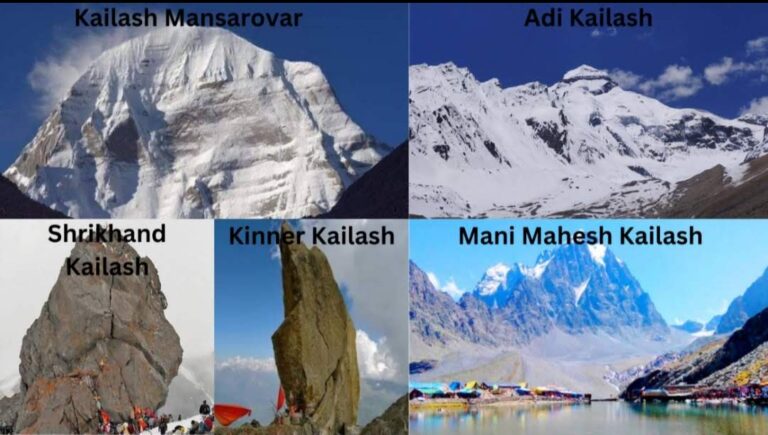
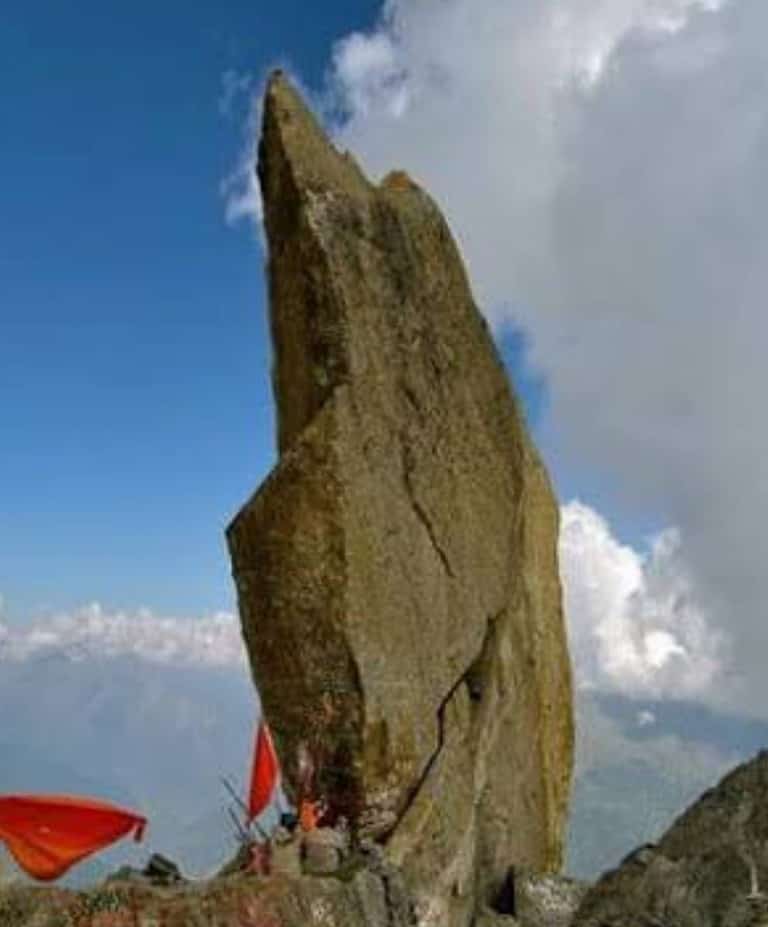
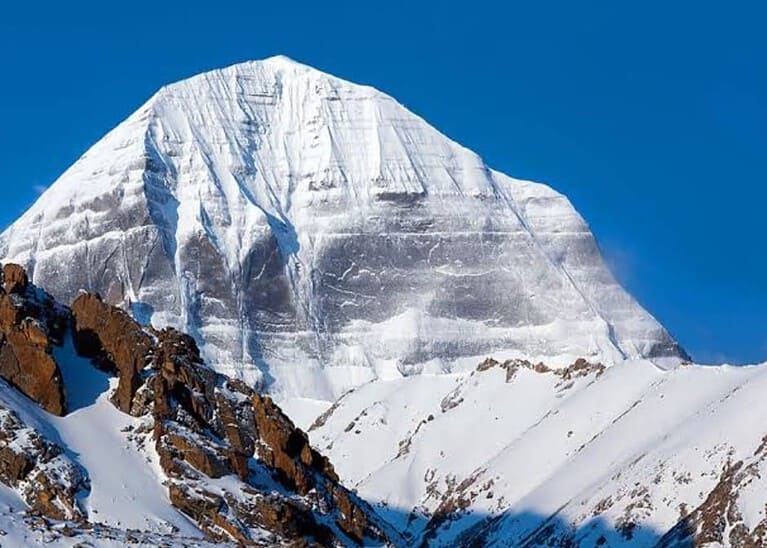


7 Comments